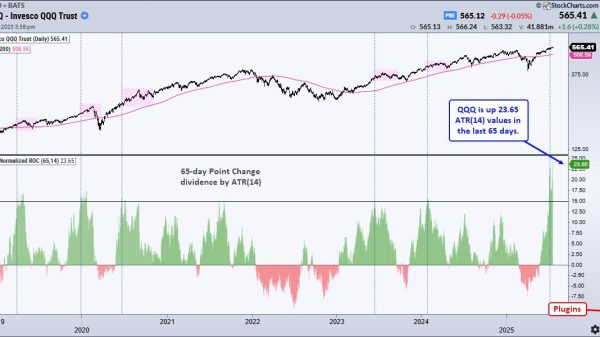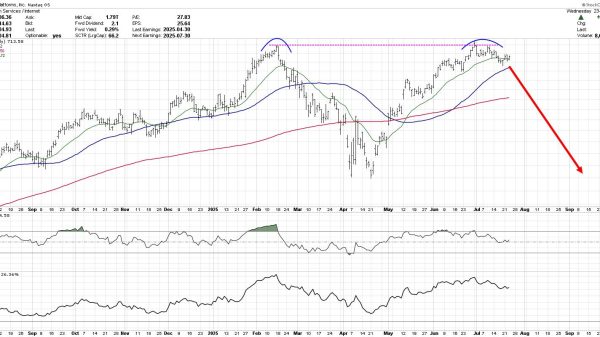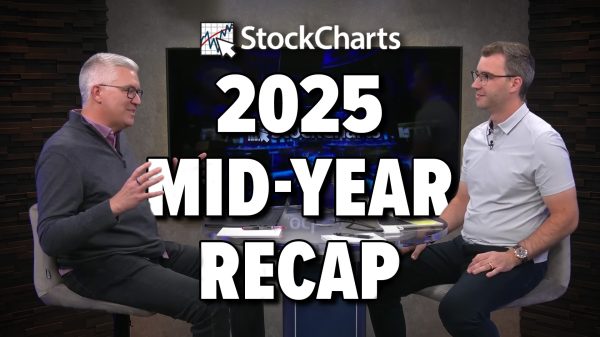There’s been much talk lately of “common good capitalism.” Among the leading voices insisting that the state must engineer capitalism to ensure that it serves the common good are Senator Marco Rubio (R-FL) and American Compass founder Oren Cass. Also writing favorably about “common good capitalism” (although the full measure of his support isn’t clear) is frequent AIER contributor Alex Salter.
I dissent.
If all that “common good capitalism” means is capitalism as understood and championed over the past 250 years by liberal scholars such as Adam Smith and Frédéric Bastiat through F.A. Hayek, Milton Friedman, and, today, Thomas Sowell and Deirdre McCloskey, then giving it this new name serves no good purpose. This new appellation only confuses, as it suggests that (what I’ll call) “true capitalism” not only doesn’t promote the common good, but also is believed by its champions not to do so. Yet the scholars named here, along with other advocates of true capitalism (including me), do indeed believe that true capitalism promotes the common good. And to back our case, we’ve got lots of sound theory and solid evidence.
Of course, “common good capitalism” does differ, categorically, from true capitalism. For starters — and the subject of this column — arguments for “common good capitalism” are chock-a-block both with factual errors and faulty economic reasoning of a sort not found in arguments for true capitalism. Second — and the subject of my next column — unlike true capitalism, “common good capitalism” is rooted in a rejection of liberalism. But true capitalism and liberalism are inseparable from each other. Capitalism can no more be divorced from liberalism than Judaism or Christianity can be divorced from belief in God, or than science can be divorced from an openness to the discovery of new knowledge.
Factual Errors
My purpose here isn’t to expose the full array of factual errors committed by “common good capitalists.” Merely listing these errors would fill a thick monograph. But a sampling of these mistakes is worthwhile, in order to reveal that the grasp that “common good capitalists” have on empirical reality is so weak that intense skepticism should greet their analyses and prescriptions.
Among the most frequently encountered assertions of “common good capitalists” is the claim that American workers in recent decades have been, and continue to be, denied their fair share of the fruits of economic growth. Senator Rubio insists that American workers are “suffering,” while Oren Cass contends that American workers’ wages are “stagnating.” This suffering and stagnation, in turn, are said — as, for example, in this American Compass study — to result in lower incomes for middle-income households and rising economic inequality.
These and related claims have been repeatedly debunked by serious scholars who, unlike most “common good capitalists,” are deeply knowledgeable about the data and interpret these competently. Consult especially the work of Scott Winship, of Michael Strain, and of Phil Gramm, Robert Ekelund, and John Early. Nearly every assertion that “common good capitalists” make about the alleged desperate and deteriorating economic condition of ordinary Americans is wrong, and often spectacularly so. Far from ordinary Americans being crushed in the last few decades by globalization and the entrepreneurial dynamism that Adam Thierer calls “permissionless innovation,” ordinary Americans’ economic opportunities have expanded and their standard of living has skyrocketed.
Consider, for example, this remarkable fact, amply supported by data, described by Gramm, Ekelund, and Early:
When inflation adjustment accounts more completely for the extraordinary improvements in our well-being from new and improved products, over the last fifty years, all but 6.2 percent of households in 2017 had incomes that would have placed them in the top quintile in 1967.
Or ponder Michael Strain’s summary of his well-documented findings:
A country as large as ours, in which citizens have such varied experiences, makes generalizing difficult. But today’s prevailing narrative is so stark that the task of generalizing becomes much easier. The narrative is wrong. America is upwardly mobile, particularly for those nearer the bottom of the income distribution. Incomes aren’t stagnant. Workers do enjoy the fruits of their labor. The argument that life hasn’t improved for typical households in decades borders on the absurd.
Another false claim used by “common good capitalists” to support their case for government intervention is the assertion that globalization saps America of her manufacturing prowess and whittles away her industrial capacity. In fact, however, manufacturing output in the US continues to do just fine, as does American industrial capacity.
Here, from Senator Rubio, is an especially troubling observation:
Business investment in the United States is decreasing… Net private domestic investment, or the total amount of private investment in fixed assets like equipment, machinery, or property after accounting for depreciation, fell from nearly a tenth of US Gross Domestic Product (GDP) as late as the mid-1980s, to less than half of that amount by the end of 2018…
Fortunately, upon investigation this observation turns out to be so misleading that we need not be troubled by it.
The absolute amount of inflation-adjusted net private domestic investment was, in 2018, just shy of an all-time high, and was 81 percent higher than it was in 1984. However, it is true that this investment in 2018 was slightly less than it was in 2000 and again in 2005-2006 — in both cases years just before recessions. But as these data show, when the recessions end, inflation-adjusted net private domestic investment rises. Indeed, this investment has recently risen, post-recession, more impressively than it did during the span from 1967 (the first year for which these data are available) through 1991. Although over the years 1967-1991 annual real net private domestic investment had (as it always does) its ups and downs, this investment in 1991 was about the same as it was in 1967. In sharp contrast, after rising pretty steadily from its negative position in 2009, this investment in 2018 was 242 percent higher than it was in 1991. Today (2021), despite the COVID lockdowns and the Democrats’ and many Republicans’ growing hostility to the private sector, this investment remains high by historical standards.
Astute readers will point out that Senator Rubio qualified his claim by writing about net investment as a share of GDP. Well…
For starters, the Senator’s statement that net private domestic investment was “nearly a tenth” of GDP in the mid-1980s appears mistaken. By my calculation, in 1984 (the year in the 1980s when such investment peaked) this investment wasn’t close to being ten percent of GDP. From this graph, I used the GDP figure for 1984, $7.48 trillion, expressed in 2012 dollars. I then divided $7.48 trillion into $483.8 billion, which is net private domestic investment in 1984, also expressed in 2012 dollars. Real net private domestic investment in 1984 turns out to have been only 6.5 percent of GDP.
The same calculation done for 2018 finds that real net private domestic investment that year — $876.8 billion (expressed in 2012 dollars) — was 4.7 percent of GDP ($18.73 trillion [2012 dollars]). Yes, net private domestic investment as a share of GDP was in 2018 lower than in 1984, but far from being “less than half” of what it was 34 years earlier.
Furthermore, given the volatility from year to year of such investment, comparing any two years to each other is highly misleading. For example, had Senator Rubio instead compared net private domestic investment as a share of GDP in 2018 to that in 1983 rather than in 1984, he would have discovered that this investment was higher, as a share of GDP, in 2018 (4.7 percent) than it was in 1983 (3.6 percent). Similarly, had he compared 2018 to 1988, he would have found that net private domestic investment as a share of GDP was, at 4.7 percent, the same in 2018 as in 1988. Yet these findings would not have supported his assertion that the US economy is today gripped by chronic stagnation.
The significance of Senator Rubio’s ‘facts’ is further diminished by the realization that if such comparisons are made for any pair of years during America’s apparent golden era, findings similar to the one that he reported as evidence of the need for government intervention — specifically, that net private domestic investment as a share of GDP is lower in a later year than it was in an earlier year — can easily be found. For example, in 1973 net private domestic investment as a percentage of GDP was 6.4, while, again, in 1983 it was 3.6.
But Rubio’s argument is plagued by an even more fundamental problem, which is this: A better measurement (than net private domestic investment as a share of GDP) of the productivity and promise of the American economy is the net worth of American companies. The net worth of a company reflects its expected profitability in the coming years and, in a market economy, expected profitability is determined by the amount of net value that company is expected to produce. For a company operating without subsidies or other special privileges in a market, the higher is its net value, the higher is its likely productivity.
As it happens, the net worth of nonfinancial corporate businesses in the US is today near an all-time high. In 2019 (the year before COVID and its attendant monetary distortions), the net worth of nonfinancial corporations in the US was, in 2019 dollars, $24.8 trillion. (In the last quarter of 2022 it stood, in 2019 dollars, at $27.6 trillion.) In 1984, the net worth of nonfinancial corporations in the US was, in 2019 dollars, $9.0 trillion. Thus, in the 35 years before COVID the real net worth of nonfinancial US corporations nearly tripled. (These data on corporate net worth aren’t adjusted for inflation. I therefore used this Personal Consumption Expenditures price index inflation calculator to convert 1984 dollars into 2019 dollars.) This tripling of the real net worth of nonfinancial US corporations is powerful evidence that the productivity of the American economy is high and growing — a trend that’s hardly surprising given the steady increase over this same time of the real value of America’s capital stock.
The data simply run contrary to “common good capitalists’” assertions that the American economy is in dire straits.
Economic Errors
“Common good capitalists’” carelessness with data is paired with an often comical failure to understand basic economics. One such recurring error is the assertion that US trade deficits represent, or result in, net reductions in demand for American-made outputs. As Oren Cass put it in a 2019 New York Times op-ed, “More trade is good, if that trade is balanced. But huge trade deficits represent supplies [produced by] foreign workers entering the United States market from afar with no commensurate rise in foreign demand for what American workers produce.”
This claim is both factually false and rooted in a mistaken premise.
It’s factually false because most dollars that foreigners do not spend buying American exports nevertheless return to the US; they do so as investments. And this inflow of investment dollars from abroad, no less than an inflow of dollars to buy American exports, fuels “demand for what American workers produce.” It might fuel this demand directly, as when the Dutch company Ikea uses dollars to build a new store in the US. Or it might fuel this demand indirectly, as when non-Americans buy US government bonds, the sales revenues of which are then spent by the US government on military weaponry or on welfare programs that increase their recipients’ spending power. A key reality that Mr. Cass and other “common good capitalists” miss is that foreigners accept dollars in exchange for their exports not because foreigners wish to hoard monochrome portraits of dead American statesmen, but because foreigners wish either to spend or invest those dollars in the US.
The mistaken premise in Mr. Cass’s claim is that Americans would be harmed if, contrary to fact, foreigners literally or figuratively stuffed most or all of their dollars into mattresses. If foreigners were to refuse to spend or invest their dollars in the US, that would be for us Americans, trade-wise, the best of all possible worlds. We Americans would grow even richer at foreigners’ (voluntary) expense.
The cost of printing a $100 bill is 17 cents. Thus, if foreigners hoarded their dollars, for every million dollars worth of goods we import in exchange for hundred-dollar bills, we’d spend a mere $1,700 — netting us Americans a handsome profit of $998,300 on every $1,000,000 of imports purchased. Put differently, the rate of return, in terms of the value of goods and services imported, on trading with foreigners would be 58,724 percent! This rate of return would be even higher if we were to pay with lower-denomination bills (which cost less to produce than do $100 bills), and higher still if we paid with only digital bank-account entries.
How we Americans would be impoverished if foreigners chose to sell to us valuable goods and services in exchange only for fancily inked slips of linen and cotton that we produce at minimal cost is beyond me. Alas, though, foreigners are just like us: they produce and sell in exchange for dollars only because they want to spend or invest those dollars, ultimately in the US. And the spending and investing of dollars by foreigners creates demand for American labor no less than does the spending and investing of dollars by Americans.
Another economic fallacy is Mr. Cass’s description of the free market’s process of directing investment resources as a “drunk donkey,” a beast that meanders aimlessly, if stubbornly. In fact, however, interest rates set by markets coordinate the intertemporal allocation of resources. Such interest rates reflect both the preferences of income earners to consume today compared to consuming tomorrow, and the promise of various possibilities of investing resources in the present to produce consumption goods for the future. Additionally, workers and entrepreneurs consult today’s prices and interest rates in determining if and how they should ‘change’ their comparative advantages by investing their time and money.
If these market-guided investment decisions were, on the whole, no better than those that would be made by an intoxicated ass, the American economy’s private sector would never have flourished economically. More generally, countries with greater economic freedom would be found over time to be no more prosperous than are countries in which the state exercises more control over the allocation of resources. But in fact, economic freedom is positively correlated with higher per-capita incomes and higher economic growth.
As serious as are the above-documented problems with “common good capitalism,” an even deeper problem is this movement’s rejection of liberalism — a rejection that I’ll discuss in my next column.
























